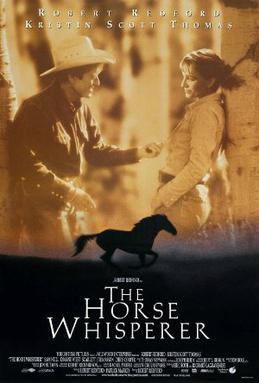A horse whisperer is a professional who uses non-verbal communication to understand and train horses. Horse whisperers are skilled professionals who use non-verbal communication techniques to understand and train horses.
By observing the horse’s body language and behavior, they establish a bond of trust and effectively communicate their desires to the animal. This approach involves patience, empathy, and the ability to read and interpret horse behavior accurately. With their gentle methods, horse whisperers can help solve behavioral issues, build confidence, and improve the overall partnership between horses and their human handlers.
This ancient practice of horse whispering has gained popularity in recent years as a more humane and respectful way to interact with these magnificent creatures. We will explore the fascinating world of horse whispering, its principles, techniques, and its impact on horse training and welfare.
Understanding The Horse Whisperer Approach
The Horse Whisperer approach is a unique technique that focuses on developing a deep bond with horses. It has its origins in ancient horsemanship practices with modern adaptations for today’s equestrian world. By understanding and utilizing this approach, horse trainers and riders can establish trust, communication, and respect with their equine partners.
The Horse Whisperer technique is defined by its emphasis on non-verbal communication, body language, and understanding the psychology of horses. It involves observing and interpreting subtle cues from the horse, which allows the trainer to communicate effectively and build a positive relationship based on mutual understanding and trust. This technique requires patience, empathy, and a deep understanding of equine behavior.
The ancient origins of the Horse Whisperer approach can be traced back to various cultures that relied on horses for transportation, warfare, and agricultural practices. Throughout history, horsemanship has evolved, and modern horse trainers have integrated new methods and knowledge into the Horse Whisperer approach.
The main goal of the Horse Whisperer technique is to develop a deep bond with horses. It involves building trust through empathetic understanding, clear communication, and consistent positive reinforcement. By establishing a strong connection with their horses, trainers and riders can achieve a harmonious partnership that is based on mutual respect and cooperation.
Techniques And Methods Employed By Horse Whisperers
Horse whisperers are skilled individuals who have the ability to create a deep connection with horses through various techniques and methods. One of the key aspects of their approach is building trust and respect with the animals.
Non-verbal communication plays a crucial role in this process. Horse whisperers understand that horses communicate primarily through body language, and they utilize this knowledge to establish a connection with the animals. By observing and interpreting the horse’s body language, they can gauge its emotions and respond accordingly.
Using their own body language, whisperers can convey their intentions and establish a sense of leadership and trust with the horse. They maintain a calm and assertive demeanor, using subtle cues to communicate their desires to the animal.
Overall, horse whisperers employ a combination of observation, non-verbal communication, and establishing trust and respect to create a bond with horses. Through these techniques, they are able to develop a deep understanding and connection with these magnificent animals.
The Benefits And Impact Of Horse Whispering
A horse whisperer is someone who has a unique ability to understand and communicate with horses on a deep emotional level. This practice, also known as natural horsemanship, has become increasingly popular in recent years due to its numerous benefits and positive impact on both horses and their owners.
One of the key benefits of horse whispering is its ability to heal horses with emotional trauma. Horses, like humans, can experience traumatic events that leave a lasting impact on their mental well-being. Horse whisperers use their understanding of horse psychology and behavior to help these animals overcome their emotional scars and regain trust in humans.
Another area where horse whispering excels is in improving behavioral issues in horses. Many horses develop problematic behaviors such as aggression, fear, or resistance due to various reasons. Through patient and gentle training methods, horse whisperers can address these issues and transform the horse’s behavior into a more positive and cooperative one.
Additionally, horse whispering can greatly enhance performance in equestrian sports. By building a strong bond and mutual understanding with their horse, riders can achieve improved cooperation, responsiveness, and trust during competitions. This can result in better communication, increased performance, and overall success in various equestrian disciplines.
In conclusion, horse whispering offers a range of benefits for horses and their owners, including emotional healing, behavior improvement, and enhanced performance. By utilizing this unique approach to horsemanship, individuals can establish a deeper connection with their horses and achieve harmony and success in their equestrian pursuits.
Famous Horse Whisperers And Their Contributions
| Horse Whisperer | Contribution |
|---|---|
| Monty Roberts | The Original Horse Whisperer |
| Buck Brannaman | The Inspiration Behind “The Horse Whisperer” |
| Anna Twinney | The Advocate of Trust-Based Horsemanship |
The Difference Between Horse Whispering And Traditional Training Methods
The Difference between Horse Whispering and Traditional Training Methods
Gentle Approach vs. Forceful Training: Horse whispering and traditional training methods differ significantly in their approaches. While traditional training often involves force and dominance, horse whispering emphasizes a gentle and cooperative approach. Horse whisperers believe in building a deep connection and mutual trust with the horse, allowing for effective communication and partnership without the need for physical force or coercion.
Breaking Stereotypes and Misconceptions: Horse whispering challenges common stereotypes about horse training, aiming to debunk the misconception that control through dominance is the only way to achieve results. Instead, the focus lies on understanding and respecting the horse’s natural instincts and behavior, working with them rather than against them.
The Role of Empathy and Patience: Empathy and patience play crucial roles in horse whispering. Horse whisperers take the time to understand the horse’s feelings and emotions, allowing them to tailor their training methods accordingly. They patiently work through any challenges or obstacles, helping the horse overcome fears or traumas at its own pace.
Becoming A Horse Whisperer: Skills And Training
To become a skilled horse whisperer, developing sensitivity and intuition is crucial. Learning horse psychology and behavior is the first step towards understanding these magnificent animals. By observing their body language and identifying their needs, horse whisperers can establish a deeper connection with them. This understanding helps them to communicate effectively and gain the horse’s trust.
Another essential aspect of becoming a horse whisperer is gaining apprenticeship and practical experience. Working under the guidance of experienced professionals provides the opportunity to learn various techniques and refine the skills required to handle horses. The experience gained through hands-on interaction with different horses helps horse whisperers become more confident and adapt their approaches to individual horses’ temperaments and needs. Additionally, regular practice, patience, and consistency are key elements in mastering the art of horse whispering.
Ethical Considerations In Horse Whispering
A horse whisperer is a professional who uses non-violent and compassionate techniques to train and communicate with horses. In the field of horse whispering, there are ethical considerations that must be taken into account to ensure the well-being and welfare of the horse.
One important aspect of ethical horse whispering is putting the horse’s well-being first. This means considering the horse’s physical and emotional needs throughout the training process. The horse whisperer must be attuned to the horse’s behavior and body language, paying attention to signs of stress, discomfort, or fear.
Respecting boundaries and consent is another crucial aspect of ethical horse whispering. The horse whisperer must understand and respect the horse’s personal space, ensuring that training methods are not invasive or aggressive. Consent from the horse is essential, and the horse whisperer should always seek permission before attempting any training techniques.
Horse owners also have a responsibility in the ethical practice of horse whispering. They should carefully select a qualified and experienced horse whisperer who upholds ethical standards. They should provide a safe and comfortable environment for the horse, as well as regular veterinary care and proper nutrition.

Credit: www.imdb.com
Frequently Asked Questions Of What Is A Horse Whisperer
What Does A Horse Whisperer Do?
A horse whisperer uses gentle techniques to communicate with and train horses without force. They build trust and understanding with the horse, helping to calm them and address behavioral issues.
How Does A Horse Whisperer Communicate With Horses?
A horse whisperer communicates with horses through body language, voice commands, and energy. They use subtle cues and non-verbal signals to establish a connection and understand the horse’s needs and emotions.
Is Horse Whispering A Form Of Horse Training?
Yes, horse whispering is a unique approach to horse training. Rather than using traditional methods that may rely on coercion or force, horse whispering emphasizes building trust and understanding with the horse for a more cooperative and harmonious relationship.
Can Anyone Become A Horse Whisperer?
Becoming a skilled horse whisperer requires patience, knowledge, and experience working with horses. While anyone can learn the techniques, it takes time and practice to develop the ability to communicate effectively with these animals.
Conclusion
Understanding the role of a horse whisperer is essential for those looking to develop a deep connection with these majestic animals. By using gentle techniques and a deep understanding of equine behavior, horse whisperers can establish trust and create harmony with their equine partners.
Whether you’re a horse enthusiast or just curious about the art of horsemanship, exploring the world of horse whispering can be a rewarding and enlightening experience. Increase your knowledge, connect with horses, and embrace the wisdom of these remarkable individuals who can communicate with nature’s most spirited creatures.
Happy horse whispering!

